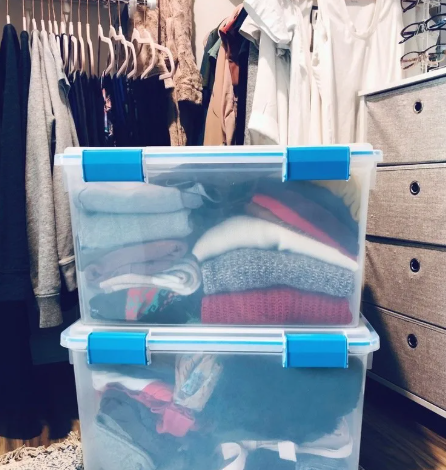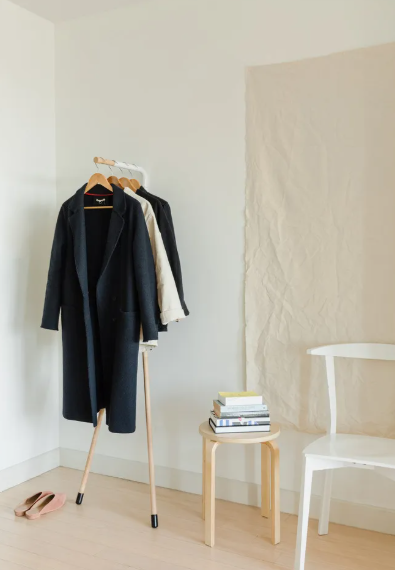
How to Pack Clothes for Long-Term Storage
Packing clothes for long-term storage requires careful planning to keep them in good condition. From avoiding moisture and pests to choosing the right containers, proper packing ensures your clothes remain fresh and ready to wear when you need them.
Why Proper Packing is Important
When clothes are stored for an extended period, they are at risk of developing issues such as moisture damage, fading, and pest infestations. Fabrics like wool, cotton, and silk can degrade if not stored properly, and pests like moths can cause irreparable damage. To avoid these problems, it’s important to pack your clothes in a way that protects them from moisture, pests, and other elements that can harm them.
By investing a little extra time and effort in packing, you’ll extend the lifespan of your clothing and avoid costly repairs.
Clean and Dry Your Clothes Before Packing
Before storing your clothes, ensure they are completely clean and dry. Even if your garments appear to be clean, sweat, body oils, and dust can build up over time, attracting pests and causing stains to set in.
To prepare your clothes for long-term storage:
- Follow care instructions: Always check the labels for proper washing and drying methods to prevent damage to delicate fabrics.
- Remove stains: Treat any stains before washing, as they can become permanent if left untreated.
- Dry completely: Make sure your clothes are thoroughly dry before storing them. Dampness can lead to mildew or mold growth.
Once your clothes are cleaned and dried, avoid ironing them as it may create permanent creases that could damage the fabric during storage.
Choose the Right Storage Containers
Selecting the right storage containers is crucial for protecting your clothes from dust, pests, and moisture.
- Breathable garment bags: For natural fabrics like cotton, wool, and silk, breathable garment bags made from cotton or canvas are ideal. These allow air circulation, preventing moisture buildup and keeping dust out.
- Plastic bins with ventilation: Plastic bins with ventilation holes offer extra protection against pests and dust while allowing for minimal airflow, which helps prevent moisture accumulation.
- Avoid cardboard boxes: Cardboard boxes may seem convenient, but they can trap moisture and attract pests. It’s better to use containers specifically designed for long-term storage.
When choosing containers, avoid overpacking them. Allowing a little breathing room in the container can help prevent excessive creases and fabric stretching.
Fold Clothes Properly to Prevent Wrinkles
Folding your clothes the right way before storage can help avoid wrinkles and fabric damage. Here are some folding tips for different types of garments:
- Heavy items: For coats, sweaters, and other bulky items, fold them loosely. Avoid over-folding, which can stretch the fabric.
- Delicate fabrics: For fragile items like silk or chiffon, place acid-free tissue paper between the folds. This prevents wrinkles and minimizes friction, which can damage delicate fibers.
- Everyday clothes: For items like shirts and pants, fold neatly but avoid sharp folds that may leave creases over time. Alternate the direction of folds to prevent pressure spots.
For certain garments, hanging them might be a better option. Use padded hangers and breathable garment bags to protect the fabric from dust and stretching.
Protect Delicate Fabrics with Tissue Paper
For delicate fabrics, using acid-free tissue paper is essential. It prevents discoloration, yellowing, and damage from friction. Simply place tissue paper between delicate items to protect them during storage. This method will also help keep the garments free from dust and debris.
Use Cedar Blocks and Sachets to Keep Clothes Fresh
Moths and other pests can damage natural fabrics like wool and cotton during long-term storage. To prevent this, use natural repellents such as cedar blocks or sachets filled with lavender, rosemary, or thyme. Cedar is particularly effective at deterring moths, while lavender offers a pleasant scent and mild pest control properties.
Place cedar blocks or sachets in your storage containers, and refresh them every few months to maintain their effectiveness.
Avoid Vacuum Sealing for Long-Term Storage
While vacuum sealing clothes may be great for saving space, it’s not ideal for long-term storage. Compressing garments for extended periods can cause permanent wrinkles and damage delicate fabrics. Additionally, vacuum sealing eliminates airflow, which could lead to moisture buildup and mold growth if any dampness remains.
Instead, use breathable storage solutions that allow for air circulation while protecting your clothes from dust and pests.
Store Clothes in a Cool, Dry, and Dark Space
The environment where you store your clothes is just as important as how you pack them. Clothes should be kept in a cool, dry, and dark place to prevent damage from heat, humidity, and sunlight.
- Cool and dry: Excessive heat can degrade fabrics, while humidity encourages mold growth. A climate-controlled closet or wardrobe is ideal for long-term storage.
- Dark: Sunlight can fade fabrics and weaken fibers. Avoid storing clothes in places that receive direct sunlight, such as near windows or in attics with strong light exposure.
- Ventilated: Ensure that your storage area has good airflow to prevent moisture buildup. If you’re storing clothes in a basement or attic, using a dehumidifier can help keep humidity levels low.
Regularly Check on Stored Clothes
Even with proper packing, it’s important to check on your stored clothes every few months. Open the storage containers to inspect for any signs of moisture, pests, or unpleasant odors.
Regularly refreshing the cedar blocks and sachets and ensuring the storage area remains cool and dry can prevent long-term damage and keep your clothes in excellent condition.
By following these steps, your clothes will stay fresh, safe, and ready to wear when you need them.






